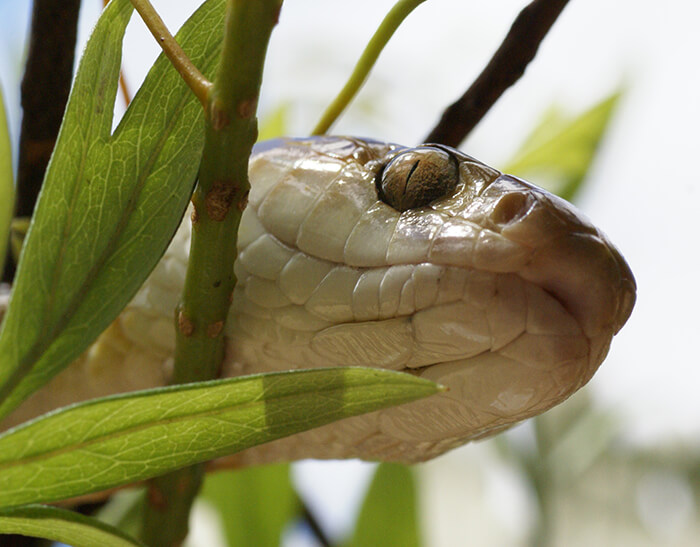Introduction
Tiger serpents are among one of the most well-known and feared reptiles in Australia, widely recognized for their striking look and potent venom. This article intends to look into the intricacies of the tiger snake's habitat, distribution, habits, and what one can expect when encountering these remarkable animals. By recognizing where to discover them and how to navigate prospective threats, you can appreciate their role in the ecological community while guaranteeing your security.
Tiger Snake Environment: Where to Find Them and What to Expect
Tiger serpents are mostly found in southeastern Australia, consisting of Tasmania, where they grow in a variety of atmospheres. Their flexibility permits them to occupy varied terrains such as seaside areas, wetlands, grasslands, and also urban areas.
Geographical Circulation of Tiger Snakes
The geographical reach of tiger serpents extends across several Australian states. They are especially usual in:
- Tasmania: The Tasmanian tiger serpent is one of the most recognized subspecies. Victoria: Located near water bodies like rivers and lakes. New South Wales: Favoring bushland areas near water sources. Western Australia: More commonly seen around swamps and estuaries.
Understanding the geographical distribution is critical for both preservation initiatives and public understanding concerning encounters with these snakes.

Preferred Environments of Tiger Snakes
Tiger snakes grow in various environments. Below are some regular atmospheres where they may be discovered:
Wetlands: They prefer marshy or marshy areas where they can access target easily. Coastal Regions: Near beaches or rough coastlines offer bountiful food sources like fish and amphibians. Forested Areas: Thick understory offers sanctuary from predators while supplying searching grounds.Behavioral Patterns Related to Habitat
Understanding tiger snake behavior within their environments is vital for interaction management:
- Nocturnal Activity: Tiger serpents often tend to be extra active throughout twilight hours (sunset and dawn), making them more challenging to spot during daytime. Territorial Nature: They display territorial behavior; thus, it's extremely important to appreciate their space if encountered.
This understanding can assist mitigate unwanted communications between humans and tiger snakes.
Are Tiger Snakes Venomous?
Yes, tiger serpents are without a doubt poisonous. Their poison has neurotoxins that can trigger paralysis or perhaps death if untreated.
What Makes Their Poison Dangerous?
The effectiveness of a tiger serpent's poison varies relying on a number of elements:
- Geographic location Individual health Quantity injected during a bite
Symptoms of a Tiger Serpent Bite
Recognizing symptoms early is vital:
- Pain at the bite site Swelling Difficulty breathing
Immediate clinical interest is crucial if bitten.
First Aid for Snake Bites
Knowing first aid treatments can be lifesaving in case of a serpent bite.
First Aid Steps for Snake Bites
Stay calm; maintain the damaged area still. Call emergency solutions immediately. Apply a stress plaster over the bite site. Keep the individual resting until help arrives.Following these steps can dramatically enhance end results complying with a serpent encounter.
Where Else Can You Come Across Tiger Snakes?
While they're skillstrainingcollege.com.au typically found in their all-natural environments, urbanization has actually caused raised encounters with humans.
Urban Encounters
Tiger snakes may venture right into yards or parks searching for food or water sources.
Precautions When Treking or Exploring
When discovering areas recognized for tiger snake habitats: Behavior of venomous snakes
- Wear thick boots Stay on paths Be vigilant
Taking these preventative measures will assist lessen dangers while you take pleasure in nature.

Baby Tiger Snakes: A Distinct Point Of View on Growth
Just like grownups, infant tiger serpents are birthed venomous however smaller sized in size.
Characteristics of Infant Tiger Snakes
- Size: Generally around 20-- 30 cm when born. Appearance: Sport comparable coloration as grownups but might have lighter bands initially.
Understanding their advancement helps in valuing their eco-friendly function from early stage onward.
FAQs concerning Tiger Snakes
1. Are all tiger snakes venomous?
Yes, all varieties of tiger snakes possess venom with the ability of triggering serious harm.
2. How can I determine a tiger snake?
Look for distinctive banding patterns ranging from yellowish-brown to blackish colors along their bodies; adults generally expand in between 1-- 2 meters long.
3. What must I do if attacked by a tiger snake?
Seek instant medical interest; use first aid steps as talked about earlier while keeping calm.
4. Do child tiger snakes pose any type of danger?
Absolutely! Regardless of their tiny size, infant tiger serpents are still poisonous and can deliver bites that require serious medical attention.
5. Are there any kind of specific habitats I should avoid?
Avoid walking through dense underbrush or near stationary water where problems prefer snake existence throughout warmer months.
6. Exactly how do preservation initiatives impact tiger serpent populations?
Conservation campaigns concentrate on habitat preservation which directly impacts populace stability by making certain sufficient food resources and secure breeding locations.
Conclusion
In summary, comprehending "Tiger Snake Environment: Where to Discover Them and What to Anticipate" not only enhances our knowledge about these exceptional reptiles but also boosts our capability to exist side-by-side securely with them in shared settings. From recognizing their liked environments to knowing how to react successfully if bitten, thorough understanding encourages us all-- whether we're wild animals lovers or informal walkers-- to value this fascinating element of Australia's all-natural heritage while prioritizing our safety.
This article acts as a considerable guide on everything related to tiger snake environments! Whether you're an avid traveler or somebody looking simply for details regarding these animals, recognizing Habitat locations of Australia’s most venomous snakes just how they interact within their environments-- and exactly how we suit that photo-- is crucial!